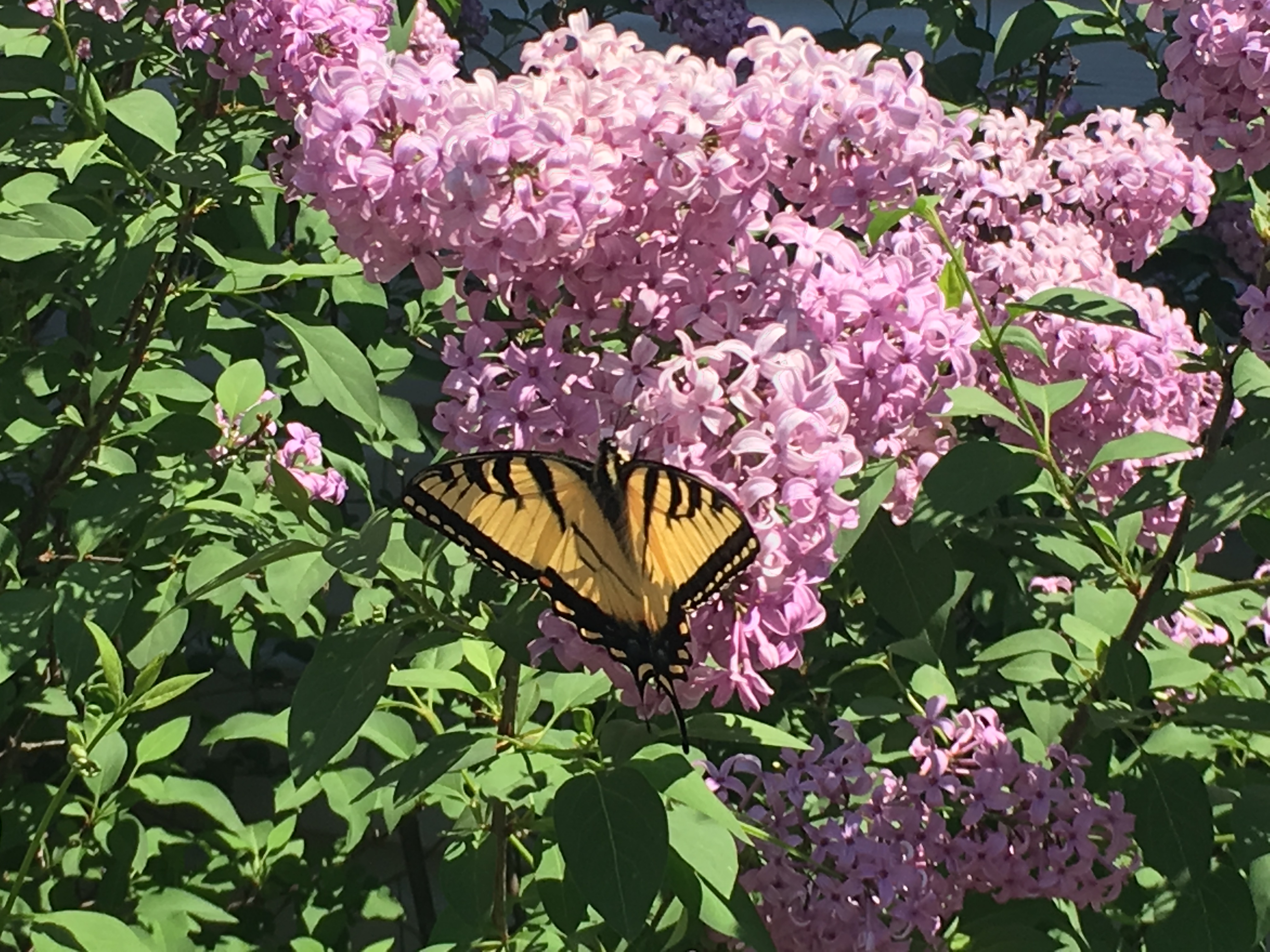I saw this cartoon on Facebook about Nature Astonishment Syndrome: the process where one by one, plants, soil, fungi, insects and bacteria become amazing to a gardener.
Gardeners are notorious for spending hours being astonished in a garden.
If this is a real thing, it might be the reason I like bugs so much! I have been concentrating on adding plants to my garden that attract certain bees, butterflies, caterpillars, worms, little wasps and various other insects, and then watching them do their jobs.
I know some insects are not really welcomed by many gardeners, but I try not to be afraid of any insect (including spiders), and I also try to pass this along to my children and grandchildren. Some have been terrified of anything buzzing or flying, but usually the fascination takes over and the fear disappears.
Butterflies seem to be the least threatening where the children are concerned, so that’s where I start. Since I have two very young grandsons right now, one of whom is particularly fearful of bugs, I am concentrating on bringing as many butterflies to the garden as possible to help them learn to be amazed.
Parsley, dill, fennel and rue (a type of shrub) are hosts to the caterpillar that becomes the Black Swallowtail — a big beautiful creature with touches of blue, orange and white.
The caterpillars will be plentiful on the host plants: black, greenish and yellow stripes with cute little horns. My experience with Black Swallowtail butterflies is that they seem to notice when I have my camera and pose quite willingly for photos.
Milkweed is the only plant that the Monarch will lay her eggs on. I have two species so far — Butterfly Milkweed with its orange flowers and Common Milkweed, an unruly, weedy plant with beautiful pinkish-greenish flowers. This plant spreads quickly so be prepared to control it.
The rewards are great. You will have the black, yellow and white striped caterpillar with its black horns (or cat ears) at both ends. The milkweed food gives the caterpillar and the butterfly a toxin that protects them from being eaten by birds.
Wild violet, another plant that is sometimes considered a thug in the garden, is host to the caterpillar that becomes a Great Spangled Fritillary. The butterfly is not as picky as the caterpillar as it will sip nectar from lantana, butterfly bush, zinnia, and aster among others.
Another creature that is fun to watch as it gets its nectar hummingbird-style is the Sphinx Moth. Sadly; its caterpillar is the tomato hornworm. Maybe I will let a few of my volunteer tomato plants survive to relocate those caterpillars.
I hope you catch a little of this NAS and provide some host plants in your garden.
The Great Plains Nature Center has A Pocket Guide to Common Kansas Butterflies that you can pick up FREE at the center at 6232 E. 29th N. It has pictures of these and many other butterflies and their caterpillers you might want to invite.
Contact Janice at Janice.sro@gmail.com









